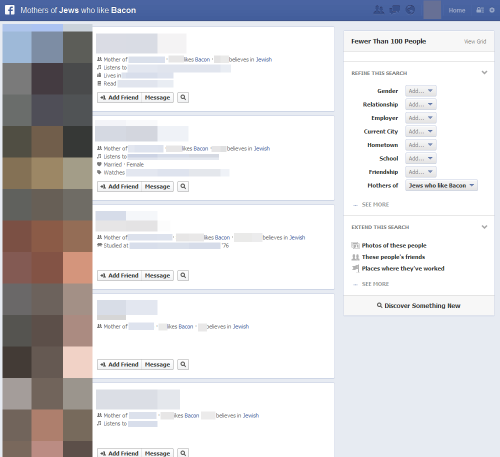A eye-opening new paper comparing U.S. students to their international peers by social class finds that the richest Americans are world-class readers, and in math, our disadvantaged kids have improved more than almost any other country

Reuters
Here's what everybody knows about education in the United States. It's broken. It's failing our poorest students and codding the richest. Americans are falling desperately behind the rest of the developed world.
But here's what a new study from the Economic Policy Institute tells us about America's education system: Every one of those common assumptions is simplistic, misguided, or downright wrong.
When you break down student performance by social class, a more complicated, yet more hopeful, picture emerges, highlighted by two pieces of good news. First, our most disadvantaged students have improved their math scores faster than most comparable countries. Second, our most advantaged students are world-class readers.
Why break down international test scores by social class? In just about every country, poor students do worse than rich students. America's yawning income inequality means our international test sample has a higher share of low-income students, and their scores depress our national average. An apples-to-apples comparison of Americans students to their international peers requires us to control for social class and compare the performances of kids from similarly advantaged and disadvantaged homes.
That's precisely what Martin Carnoy, a professor at the Stanford Graduate School of Education, and Richard Rothstein have done in their new paper, "What Do International Tests Really Show About U.S. Student Performance?" Carnoy and Rothstein dive into international standardized tests and compare U.S. performance, by social class, to three post-industrial countries (Germany, the UK, and France) and three top-scoring countries (Canada, Finland, and Korea).
 "The US happens to have a very high fraction of low-social-class kids taking the PISA test," said Carnoy. "The composition of our test sample is very different from the higher-scoring countries and post-industrial countries. If you want to more clearly see how much students are getting from the school, you have to find some way to control for their families."
"The US happens to have a very high fraction of low-social-class kids taking the PISA test," said Carnoy. "The composition of our test sample is very different from the higher-scoring countries and post-industrial countries. If you want to more clearly see how much students are getting from the school, you have to find some way to control for their families."
READING: A HAPPY STORY
One of the most heartening findings from the paper is that Americans are awesome readers. Literally, world-class. Our most advantaged students not only perform better than our European competitors, but also they perform about as well as any top-scoring country in the world, as the charts to the right show. [Hard lines compare most advantaged students; dotted lines are most disadvantaged.]
As you can see at the bottom of each chart, the story is equally inspiring for our poorest students, who are closing the gap in reading in Canada, Finland, and Korea.
"I was surprised that reading scores among our advantaged kids are so strong compared to all other countries," Carnoy said, pointing me to the graph on our right. "We're slightly lower than Finland, but it's hardly a difference. Our reading scores have gone up faster at the bottom, and they are as high or higher for advantaged kids as all other countries."
What's the explanation? Are American reading curricula the best in the world? Maybe. But there is a complicated story to be told, and it might start with immigration. Rich countries attract multicultural immigrants, Carnoy said, and it's predictable that immigrant children initially would have trouble with a new language barrier. In the U.S., a country with a long but decelerating legacy of Spanish-speaking immigrants, our schools along the border might be better prepared to deal with the language barrier than European countries whose African and Muslim immigration trends provide fresher challenges.
MATH: BEHIND, BUT CATCHING UP FASTER THAT YOU'D THINK
The single most surprising finding from the new paper might be in math. The conventional wisdom about U.S. math scores is that we're falling behind the rest of the world, and that's certainly reflected in our national averages, where we finished 25th in the last PISA test. But a closer look reveals that it's low-income American students who are clearly closing the gap with similar countries.
"It's not just [Americans] have been improving over time, but also that low-income students in similar countries have been getting worse, except for in Germany," Carnoy said.
 In the graphs to the left [again: hard lines are rich students; dotted lines are poor], U.S. math scores in dark blue are compared to France, Germany, and the UK.
In the graphs to the left [again: hard lines are rich students; dotted lines are poor], U.S. math scores in dark blue are compared to France, Germany, and the UK.
"What's really interesting is that, at the bottom, disadvantaged kids actually do as well as disadvantaged kids in France, Germany, and the UK," Carnoy said. "The problem is that our top-scoring kids do worse than every country we compared them to, except Great Britain."
When you hear pundits and politicians lament our math program, he pointed out, it's interesting to note that the real story isn't how bad our low-income students are doing, but instead how our advantaged kids are falling behind our competitors. "That points to a policy that focuses on our top scoring kids," he said.
***
The lugubrious pundits and politicians aren't entirely wrong. No matter how you slice the data, Canada, Finland, and Korea are beating us, at every level. There is no social class in the U.S. that out-performs a similar group of students in these high-flying countries in either reading or math.
But by focusing on misleading national averages rather than apples-to-apples comparisons, U.S. education critics are missing lessons that could lead to good policy.
"The big takeaway is that we're not doing as badly as the pundits are claiming," Carnoy said. "Our advantaged kids are doing very well in reading, as well as anybody in the world, and in math, disadvantaged kids have improved more than almost any other country. We're making progress, and we should be finding out why we're making that progress, or identifying what appears to be working, rather than saying we should all run over to Finland. Don't run to Finland if you want to learn about disadvantaged kids, because they're going in the wrong direction."









 Alexis Madrigal/The Atlantic
Alexis Madrigal/The Atlantic 













 Updated 1:10 p.m., January 23 The commander of the Afghanistan war didn’t have sex with or engage in any otherwise inappropriate behavior with a Tampa socialite, according to the Pentagon’s inspector general. This is how the bizarre downfall of ex-CIA ...
Updated 1:10 p.m., January 23 The commander of the Afghanistan war didn’t have sex with or engage in any otherwise inappropriate behavior with a Tampa socialite, according to the Pentagon’s inspector general. This is how the bizarre downfall of ex-CIA ...




 "The US happens to have a very high fraction of low-social-class kids taking the PISA test," said Carnoy. "The composition of our test sample is very different from the higher-scoring countries and post-industrial countries. If you want to more clearly see how much students are getting from the school, you have to find some way to control for their families."
"The US happens to have a very high fraction of low-social-class kids taking the PISA test," said Carnoy. "The composition of our test sample is very different from the higher-scoring countries and post-industrial countries. If you want to more clearly see how much students are getting from the school, you have to find some way to control for their families." In the graphs to the left [again: hard lines are rich students; dotted lines are poor], U.S. math scores in dark blue are compared to France, Germany, and the UK.
In the graphs to the left [again: hard lines are rich students; dotted lines are poor], U.S. math scores in dark blue are compared to France, Germany, and the UK.



